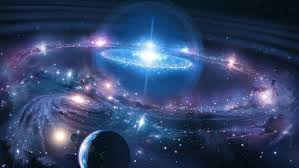
Some mountains are no more than steep hills covered with grass and trees. Others rise high into the atmosphere with snow-covered peaks. Often mountains stretch out in long chains called mountain ranges.
Mountains are formed over long periods by tremendous forces in the earth. These forces move parts of the earth’s crust in different ways, making different kinds of mountains.
Mountain ranges are important because they influence the climate and water flow of the land around them. How do they do this? Air cools as it reaches high altitudes. And cold air holds less water than warm air does. So as the warm air turns cooler near the tops of the mountains, it releases water in the form of rain or snow. This rain or snow feeds nearby rivers and streams. Mountains are also important as homes for plants and animals and as a source for minerals.
Scientists say the earth’s mountains are millions of years old. The youngest mountains have rugged, sharp peaks. Older mountains are smoother, with rounded tops. These older mountains have been worn down by wind and rain over millions of years.
But all mountains begin to wear away, or erode, even while they are rising. Rainfall washes away tiny pieces of rock. The wind carries away dust and earth.
Water seeps into cracks in the rock and freezes. Ice takes up more space than water, so it forces the cracks open. This happens over and over until rocks break off and fall down the mountainside. After millions and millions of years, all of these forces wear away the mountains.
There are five different kinds of mountains.
Fold Mountains form when sections of the earth’s crust meet head-on. This makes layers of rock in the crust crumple and fold. They often make wave-like patterns.
Fault-block Mountains form when earthquakes make the earth’s crust break into large blocks that are tilted or pushed out of place.
Dome Mountains form when forces inside the earth push the earth’s crust up into a huge bulge or dome.
Erosion Mountains form when rivers or glaciers flow over a high, flat area of rock. They wear it away to form peaks and valleys.
Volcanic Mountains form when molten rock from deep within the earth erupts. It pushes up through the earth and piles up on the surface.
Picture Credit : Google





